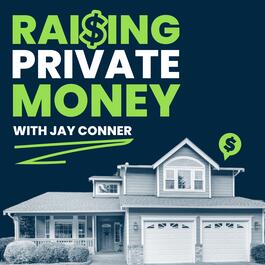
The Direct and Indirect Methods for Raising Private Money with Jay Conner
Why Your Personal Network is Your Biggest Asset in Real Estate Investing Navigating the world of real estate investing can be daunting, especially when it comes to financing your ventures. Often, it"s not about what you know but who you know. In a recent episode of the "Raising Private Money" podcast, hosts Jay Conner along with Cara Broyles, Erica Camardelle, Chaffee Thanh-Nguyen, and Banjo Camardelle, delved into the five essential steps to successfully raise private money. This blog post expands on their discussion, offering practical advice to help real estate investors unlock the potential of their networks. Make Your List The first step in raising private money is to identify potential lenders within your existing network. This might seem straightforward, yet it"s often overlooked. Jay Conner emphasized the importance of listing people you already know, particularly those you see regularly and individuals who are retired. Jay pointed out two key categories:People you see frequently: This includes friends, family, co-workers, and members of any social or community organizations you belong to.Retirees: They often have investment capital or retirement funds that could be put to work in your real estate projects. By focusing on these groups, you tap into established relationships where trust is already present—a critical component for successful private lending. Start the Conversation Once your list is ready, it’s time to engage with potential lenders. There are two primary methods for initiating these conversations: the direct and the indirect approaches. Direct Method The direct method involves asking a straightforward question, known as the "magic question." Banjo Camardelle shared his experience with this approach: "Do you have investment capital or retirement funds not giving you a high rate of return safely and securely?" This question is designed to pique interest without coming off as desperate. It’s a powerful way to shift the focus from your need for funding to the opportunity you are offering. Indirect Method If the direct approach feels too confrontational, the indirect method allows for a more subtle introduction. Crystal elaborated on this technique, which includes asking if the person knows anyone dissatisfied with their current investment returns. Often, this leads to the person considering the offer for themselves. 1. Leverage Enthusiasm Both Crystal and Kara highlighted the importance of enthusiasm. Sharing your excitement and genuine belief in your investment opportunities can be contagious. Crystal likened it to the enthusiasm parents show when talking about their newborns—it"s palpable and hard to ignore. When you’re passionate about your investment program, it organically draws people in, making them more inclined to learn about and participate in your offerings. 2. The 16-Minute Introduction: Stress-Free Investing One of the standout strategies Jay Conner discussed is the use of a 16-minute audio recording called "Stress-Free Investing." This pre-recorded message serves as an automated way to introduce potential lenders to your investment program, answering common questions and alleviating concerns. The recording allows you to present a polished, consistent message to all potential lenders, saving you time and ensuring that all key points are covered. It"s an efficient way to get the word out and generate interest without continuous one-on-one meetings. 3. Focus on Serving, Not Selling A recurring theme throughout the discussion was the mindset shift from needing money to offering an opportunity. Chaffee Thanh-Nguyen emphasized leading with a servant"s heart. When you truly believe that you are helping othe
From "Raising Private Money with Jay Conner"


Comments
Add comment Feedback